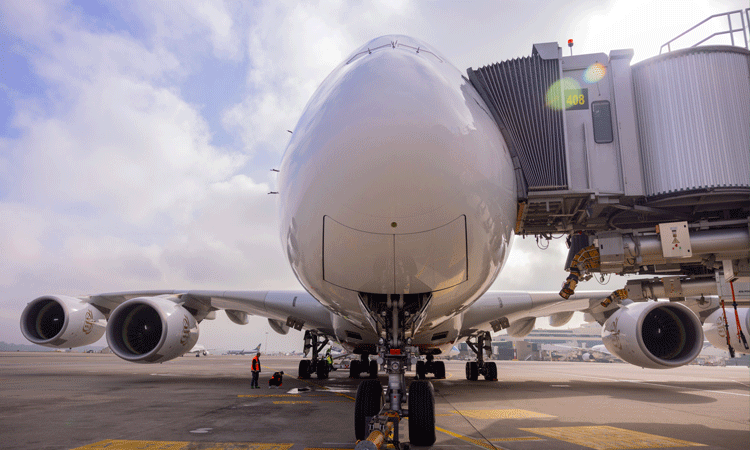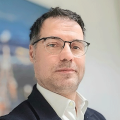Mario Ponta, Director of Innovation Quality and Continuous Improvement at SEA Milan Airports, shares his experience in building the brand new Innovation Department and the challenge of turning ideas into effective improvements.


Image rights: SEA Milan
SEA Milan Airports, which is responsible for managing Linate and Malpensa airports (totaling about 35 million passengers), did not have an innovation department in its organizational chart until May 2023.
Nevertheless, SEA has made significant progress in implementing innovations since 2019. For example, we have achieved recognized leadership in smart baggage screening and the implementation of biometrics to enable a seamless journey (e.g. face boarding before security checks and at boarding gates).
The above premise is intended to illustrate that discussions on innovation management are not based on a negative past. On the contrary, they were based on the realization that the positive results achieved in certain business areas could be shared across the organization, enabling synergies and cross-fertilization through a more structured process.
How and why did SEA decide to introduce an innovation department and what challenges can be expected during implementation? In our case, the answer is the result of a step-by-step self-assessment process.


First step: set the baseline
The starting point was to create a shared awareness among the leadership team, with the direct involvement of the CEO: internal teams were producing valuable innovations, everyone was doing their best, and the discussion was about sharing this successful approach. This was important to build a collaborative environment without blame.
Second step: share the mission, set expectations
This is a very fundamental phase: SEA has always promoted a tangible management style and we felt it was essential to rethink our innovation process in order to be in line with
that. No one, neither in the leadership team nor in the professional community of SEA, would have participated in or actively contributed to a purely theoretical innovation process to follow some management trend or simply to improve reputation on social media. To avoid this “buzzword trap”, we decided to clearly communicate the mission of the innovation process and the related expectations of the organization. In particular, the leadership team agreed on a “business plan-driven approach”, which means that the innovation priorities are derived from the overall business objectives and focus on those that are more difficult or impossible to achieve without an effective and innovative approach.
According to this view, innovations must improve the current situation (in terms of quality, environment or efficiency). This does not necessarily require the introduction of a brand new technology or no technology at all, but rather a new way of doing things (for example a BPR solution) or the provision of new services.
Technology is considered important, but it is by no means synonymous with innovation. Innovation comes from the actual adoption of a solution, which may also have a technological factor. However, airport technology is usually very mature because it has to fit into a safety-critical environment, and this is generally available on the market and relatively standardized. This means that the really critical skill for a successful innovation process is effective change management that enables everyday adoption.
In addition, the leadership team announced that SEA would have:
- An “early follower” approach with few innovation spurts where SEA has acquired highly specialized skills (e.g. biometrics or smart security)
- The focus is on the internal innovation process and on “traditional” suppliers, with open innovation, start-ups and venture capital being explored at a later stage.
Third step: analysis and design
Given the innovation strategy defined above, the next step was to conduct an organizational analysis to better understand the strengths and areas for improvement of the current organizational model.
The analysis showed both a very good starting position and room for further improvements that could be achieved through organizational adjustments. In particular, the establishment of a central, cross-company innovation department was recommended, which would be responsible for the following tasks:
- Identifying all innovation needs
- Identify key business priorities derived from the business plan and commit to them
- Conducting market scouting
- Defining a project approach (e.g. POC, TRIAL), financing and competency planning
- Accompanying and monitoring the project start
- Conduct adoption monitoring and project evaluation.
To make the innovation process even more effective, we decided to place this department directly under the CEO and combine these responsibilities with those of quality management and continuous improvement.
A centralized and highly engaged department would have had the opportunity to partner with business units (which would retain co-ownership of the innovation process) while enabling synergies and optimizations, thus leveraging the benefits of both a centralized and a distributed innovation model.
Fourth step: Implement
In June 2023, the Innovation Quality and Continuous Improvement department was officially launched, and a year later, we reflect: did we manage to balance the “urge to innovate” with pragmatism? Or did we implement unfeasible “WOW initiatives” to restore our reputation? Let’s take a look at some of the results. Within a few months, the newly established Innovation team has earned a reputation among the other departments for constantly responding to needs and suggestions that might otherwise have been over- or under-considered. Also, the international peer community, to which SEA actively contributes, has quickly started to consider the team as a reliable partner and includes it in surveys, panels and benchmarking on innovation topics.
In September 2023, an internal “call for innovation” was launched, which was considered a success: over 170 ideas were collected from 100 employees and operational staff; eight ideas (instead of the one originally planned) were selected by the leadership team as feasible and value-creating; each of these ideas was funded and will be implemented within 12 months. The Innovation Department has organized the entire process and now takes over the program management of all these initiatives.
In addition, the innovation team has started four more proof of concepts covering applications in artificial intelligence, situational awareness, baggage handling and passenger experience. More than 20 potential problems, some of which are still at a very early stage, have been analyzed and included in the evaluation process.
Finally, the innovation team has been successfully integrated into the already existing innovation projects, such as the biometric boarding project (the full implementation of FaceBoarding will go live in Linate shortly).
On the other hand, we are well aware that there is still room for improvement in many areas: our planning and financing processes as well as implementation capacities need to be improved. We are aware that open innovation could be an opportunity, but we do not yet have a process for it. In addition, many other problems will emerge from day to day.
Most importantly, we are aware that in this first year we have experienced amazing intellectual generosity, collaboration from the industry and support from our professional community, driven by strong sponsorship from the leadership team, especially CEO, COO, HR and IT. These fundamental factors that have enabled our achievement need to become part of the company culture in order to endure when the “innovation WOW effect” fades somewhat.
The coming months will tell us more about these issues, but I am personally confident based on our initial experiences that a step-by-step, business-oriented and, above all, “buzzword-safe” approach along the way will produce good results.
Keep your fingers crossed and fasten your seatbelt!


Photo credit: SEA Milan
After graduating in business administration Mario Ponta started his career in the oil and gas sector, joining the Process Improvement department at Eni SpA. After taking on increasing responsibility in change management projects, he moved to the Power Generation Business Unit as Human Resources Manager, where he was able to deepen his experience in aligning BPM “desk techniques” with the on-site implementation process. When he joined SEA Milan Airports in 2010, as Organization and Human Resources Manager, he had the opportunity to delve deeply into corporate and operational processes and their key areas of improvement. In 2023, he was appointed Director of Innovation, Quality and Continuous Improvement to increase the effectiveness of SEA’s innovation strategy.
